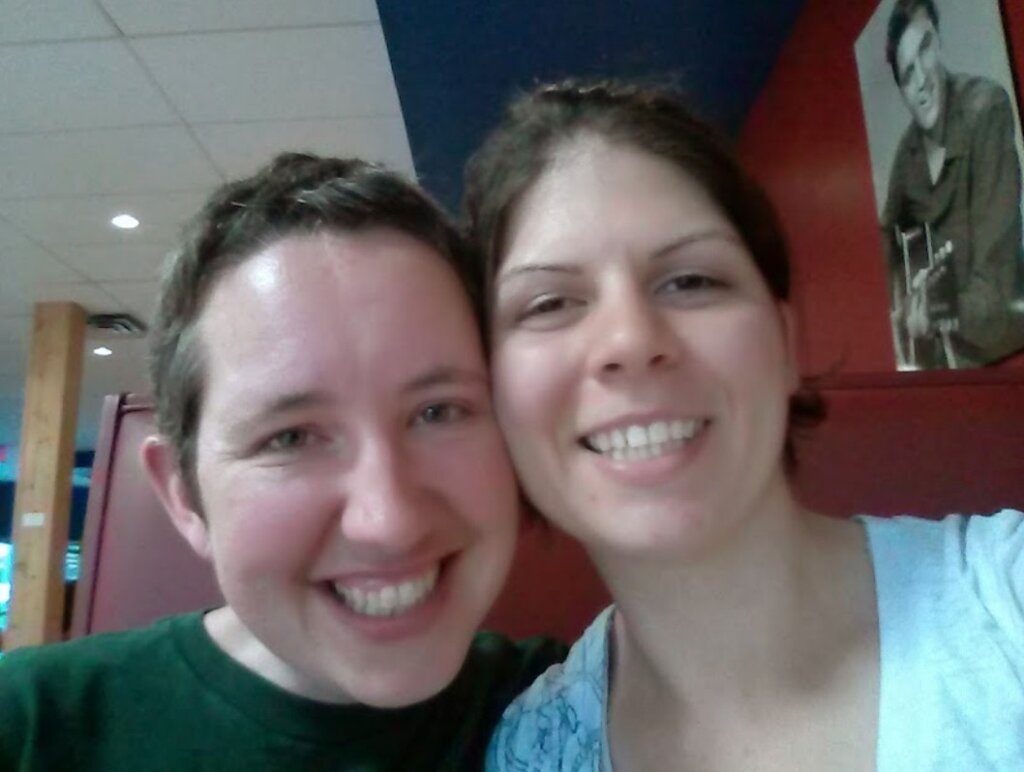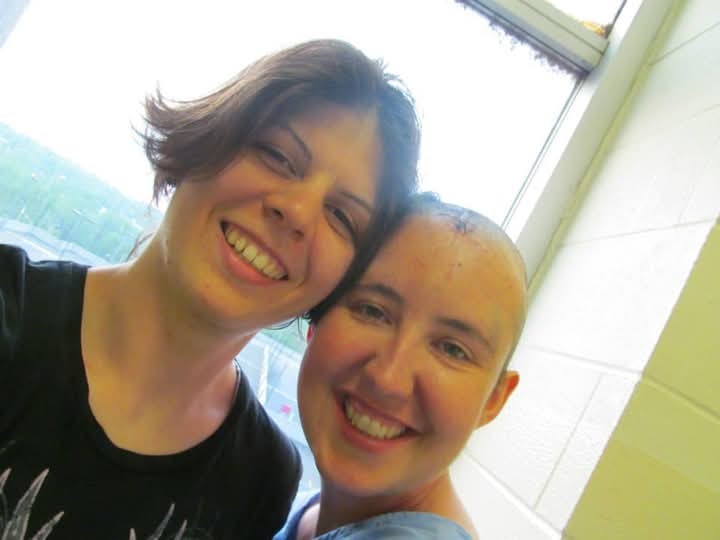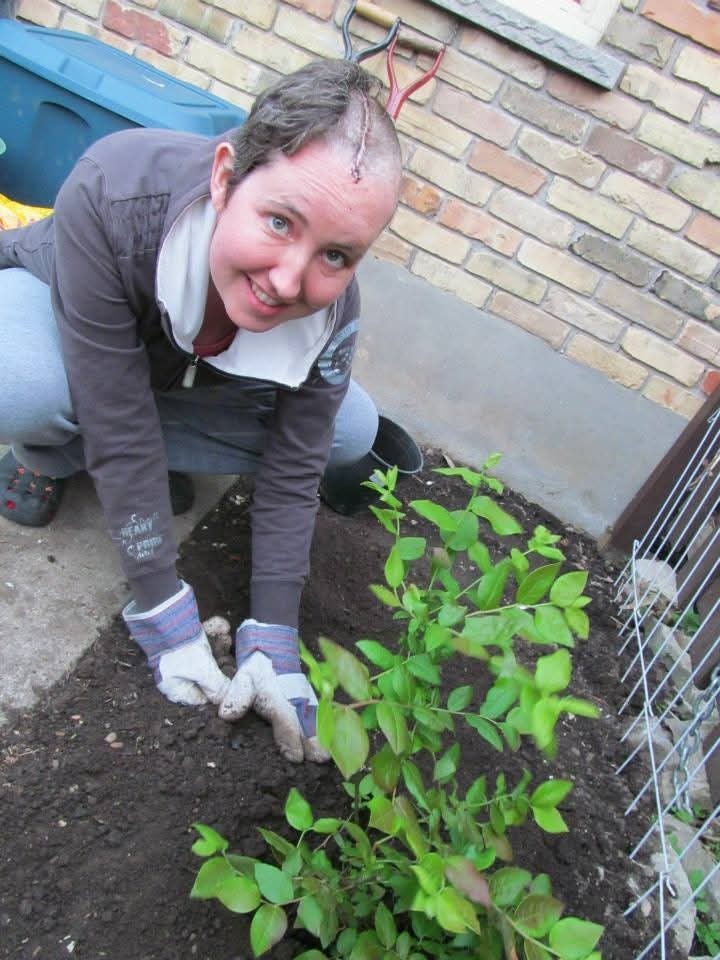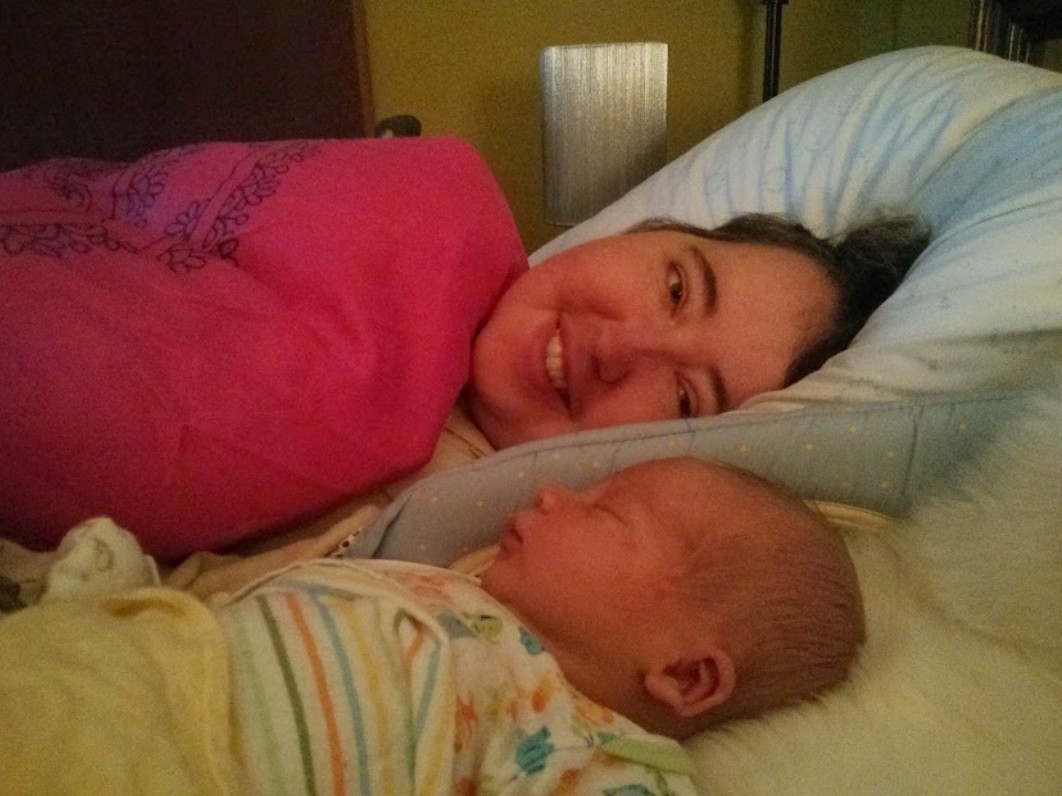
Leaving a legacy
When Bonnie Stocking met Erin Lovell, she knew she’d found someone special.
“We connected immediately,” Bonnie says. “As soon as we saw each other, we were all in.”
It was young love, which took a serious turn at the get-go.
“On our first date, she told me that she had brain cancer,” Bonnie says. “I thought it was a brave thing to share.”
Erin’s tumour returns
Erin, who had been diagnosed with oligodendroglioma, underwent surgery two years before meeting Bonnie in 2005, with her follow-up scans coming back clear. After their first date, the pair were inseparable. They spent every day together, Bonnie recalls, adding that she was drawn to Erin’s incredible character.
Not long after they’d begun dating, Erin learned that her tumour had returned. She’d been living at home with her parents in London, Ont., while taking the Child and Youth Care program at Fanshawe College.
“She was great with kids,” Bonnie says. “She was enjoying the program and learning lots.”
The news of her tumour reoccurring put a damper on Erin’s flourishing life, especially given that the chemotherapy drug recommended to her was not an affordable option. She and Bonnie decided to move in together, as Erin would receive more coverage with Bonnie’s low-income status.
“I was also happy to start my adult life with her and start this journey,” says Bonnie, who was 18 at the time.
Erin, who not only graduated but also worked in group homes while managing her diagnosis, then landed her dream job as a child and youth worker at Merrymount Family Support and Crisis Centre.
“She was a fighter,” Bonnie says. “She didn’t let her diagnosis hold her back. She loved to be productive and she loved working with children.”
Standing strong together
 Through the ups and downs, Bonnie and Erin were grateful for each other. Bonnie was there when Erin had her first grand mal seizure, which she describes as a frightening time.
Through the ups and downs, Bonnie and Erin were grateful for each other. Bonnie was there when Erin had her first grand mal seizure, which she describes as a frightening time.
“She’d had absence seizures before,” Bonnie says, of the seizures that cause brief, sudden lapses of consciousness, “but they weren’t very common for her. When she had her first grand mal seizure, I thought she was going to die. She was sick at the time, so her nose was clogged and she couldn’t breathe. Her face and lips turned blue. I called 911 and luckily, help came quick. I was really scared.”
After that, Erin was prescribed anti-seizure medication, which came with its own challenges.
“It became a job of managing side effects with more medications and then managing the side effects of those medications,” Bonnie says. “It was a trial-and-error thing that had an impact on Erin’s quality of life.”
A life-changing—and lifelong—bond
Erin, who had connected with Dr. Rolando Del Maestro for her first surgery, saw him again for her second and third surgeries.
She’d initially been told to “wait and see,” though her mom—who worked as a nurse practitioner and medical secretary—had heard of a doctor who might be able to help. Dr. Del Maestro had recently moved from London to Montreal, and was willing to look at Erin’s scans.
“He said, ‘Yeah, I think I could do something there,’” Bonnie says. “What’s very cool is that Dr. Del Maestro—I don’t know the technical details, though I know he would, because he’s awesome and he knows what he’s doing—he did something that wasn’t done before. He got all of it—all of the visible tumour tissue. He came up with a new technique that allowed him to save Erin.”
When her tumour grew back, there was no hesitation in seeing Dr. Del Maestro. The couple travelled to Montreal for the surgery, and then back to London, where Bonnie would help Erin recover.
Living in the now
She recalls cleaning Erin’s incision and cooking meals, saying her recovery from surgery went smoothly. It was the radiation that followed, that was perhaps more difficult.
“It wasn’t even just about her physical well-being,” Bonnie says. “There was something about it that made the atmosphere around us feel so negative. One day, I saw that her radiation mask was out, so I said, ‘Hey, maybe we should try putting that away.’ And when we put it away, it’s like the air changed around us.”
Erin had also been on chemotherapy medication almost continuously, which added to her challenges.
Living with cancer had been a reality from the beginning of their relationship, Bonnie says, but they kept looking forward with optimism. They loved camping and spending time outdoors, and “living in the now,” as Bonnie puts it.
Eventually, Erin started to lose some of her mobility, which left her unable to work. Still, she and Bonnie continued to look ahead.
“We thought, ‘Maybe we’ll beat this thing and we’ll get to live the life that we want to live,’” Bonnie says. “We didn’t know what the future held, but we wanted to keep planning for it. And, one of the things she and I really wanted was a family.”
Building a family
 First, the couple got a dog, but they wanted to have a child together, too.
First, the couple got a dog, but they wanted to have a child together, too.
“I was a student and she was on disability, and so I’m sure it didn’t make sense to anyone else,” Bonnie says, “but it made sense to us.”
“In our home, we were happy, and we wanted to grow the love.”
With Erin’s cancer spreading to a different part of her brain, she was scheduled for a fourth surgery—this time, performed in London by Dr. Joseph Megyesi, following Dr. Del Maestro’s retirement. She and Bonnie thought they’d try for a baby after Erin’s recovery, which went smoother than expected.
“The next day, she was gardening,” Bonnie says, of Erin, following her surgery.
However, their pregnancy journey did not go as planned. While they’d hoped to have a baby to coincide with the school calendar, so they could parent together and Erin could take over when Bonnie went back to school in the fall, it wasn’t in the cards.
“I remember the moment when we were doing dishes and I said, ‘I want to try again,’” Bonnie recalls. “‘I know it’s not the way we planned, but I want to try again.’ And she said, ‘Oh my gosh, me too.’”
A few weeks after another visit to the fertility clinic, the couple got a phone call to let them know they were expecting.
“We were so excited,” Bonnie says. “Terrified, but excited.”
From partner to caregiver
Bonnie was heavily pregnant when Erin was hospitalized again, this time with a severe electrolyte imbalance.
“She didn’t want me to call for help and I was getting frustrated because she was really sick,” Bonnie says.
While her health improved with medical care, Erin struggled to walk and talk. When she was ready to be discharged, they realized she couldn’t go home—where they had one bathroom that required stairs to access.
They moved in with Erin’s mom and stepdad, who set up a bedroom for them on the ground floor, with easy access to a bathroom.
“That’s when things got really hard, because it’s when I went from being a partner to a caregiver.”
She’d cared for Erin after her surgeries and during her health challenges, but Erin was now needing care around the clock—while Bonnie was eight months pregnant. A wheelchair helped with Erin’s mobility, though Bonnie still had to lift her in and out of it and push her around in it, as Erin had lost the use of her right arm.
She then got an electric wheelchair, which made it easier for her to get around more independently. She also got a birthing partner book—something Erin read cover to cover, ready to do her duty when the time came.
Welcoming Rolan
 They debated between a hospital and a home birth, though ended up taking the home birth route. It was for the best, Bonnie says, as Erin often needed to rest and they both benefited from having the comforts of home.
They debated between a hospital and a home birth, though ended up taking the home birth route. It was for the best, Bonnie says, as Erin often needed to rest and they both benefited from having the comforts of home.
“When I was giving birth, she was going back and forth from the kitchen, switching out hot and cold compresses and bringing me water in between contractions,” Bonnie says. “She was on it, like—‘This is my job.’ That’s who she was. She was an achiever—she set goals and she achieved them.”
They decided to name their child Rolan, wanting a gender-neutral name that honoured someone who had come to mean a lot to them—Dr. Rolando Del Maestro.
“We would not have gotten to where we were if it hadn’t been for Dr. Del Maestro,” Bonnie says. “He is so brave and innovative and intelligent, and an incredible surgeon. But, more than that, he has this calm, reassuring presence. And, he’s just so human.”
Bonnie recalls sitting and talking with Dr. Del Maestro and his wife, Pam, on the hospital benches, about everyday things.
“I’ve never met anyone with that kind of bedside manner,” Bonnie says. “We didn’t only talk about Erin’s treatment. They were empathetic and genuinely cared.”
Difficult conversations
After Rolan’s birth, Erin seemed to be making progress. She’d been working with a physiotherapist and had started using a walker, but then her progress reversed, Bonnie says.
“That’s when my family started having those difficult conversations with me, to help me realize this wasn’t going to end well,” Bonnie says. “That was really hard for me to get my head around, because I thought we were going to beat it.”
At this point, Bonnie was caring for both Rolan and Erin, with medical professionals doing their rounds to check on Erin. Bonnie put a note on the door, asking that visitors let themselves in rather than knocking or ringing the doorbell, as it disrupted their rest. So, she was pleasantly surprised when one day, she noticed Dr. Del Maestro standing in their doorway.
“I’m like, ‘Oh, hello,’” she says. “He was just there to visit.”
Erin, sadly, passed away when Rolan was two months old.
Accepting grief
Bonnie took the next year to grieve and to be with Rolan, going back to school the following year. Still, she struggled with the deep grief she felt, and consulted with her doctor.
“She said that caring for Rolan had been my focus and it had distracted me from my grief,” Bonnie recalls.

“I learned that you can’t skip grief. You have to feel it and go through it. Even when you don’t want to and it feels terrible, you have to process it for it to not be so disabling.”
Bonnie says it was hard to be involved in the brain tumour community following her loss, both because of her grief and her life as a single parent.
“I just wanted to distance myself from any reminders of this disease and the journey we took through it,” she says. “But I always intended to come back and participate, because the only reason we had such incredible support was because of all the good work that people do.”
Finding joy again
She’s started volunteering with Brain Tumour Foundation of Canada’s support group, while working as a teacher and raising now-10-year-old Rolan—who, by the way, loves her name, and has grown up in contact with the Del Maestro family.
Bonnie is always sharing stories of Erin with Rolan, determined to keep Erin’s memory alive.
“I’ll tell her, ‘We did this all the time, or this was one of our favourite places,” Bonnie says. “I think about her every day, but I can be happy and enjoy what I’m doing. I’m not burdened by grief. And I think Erin would be glad for that.”